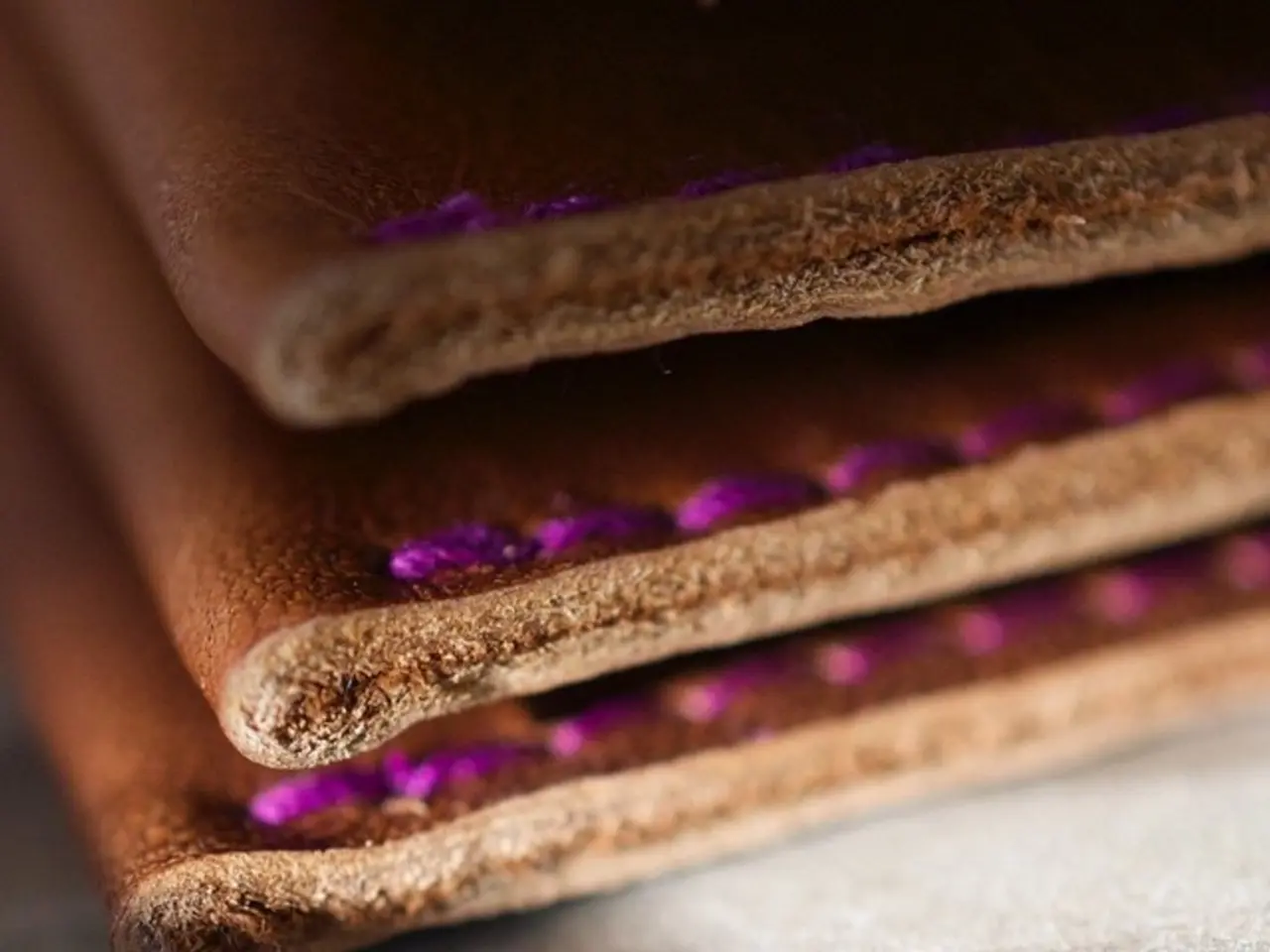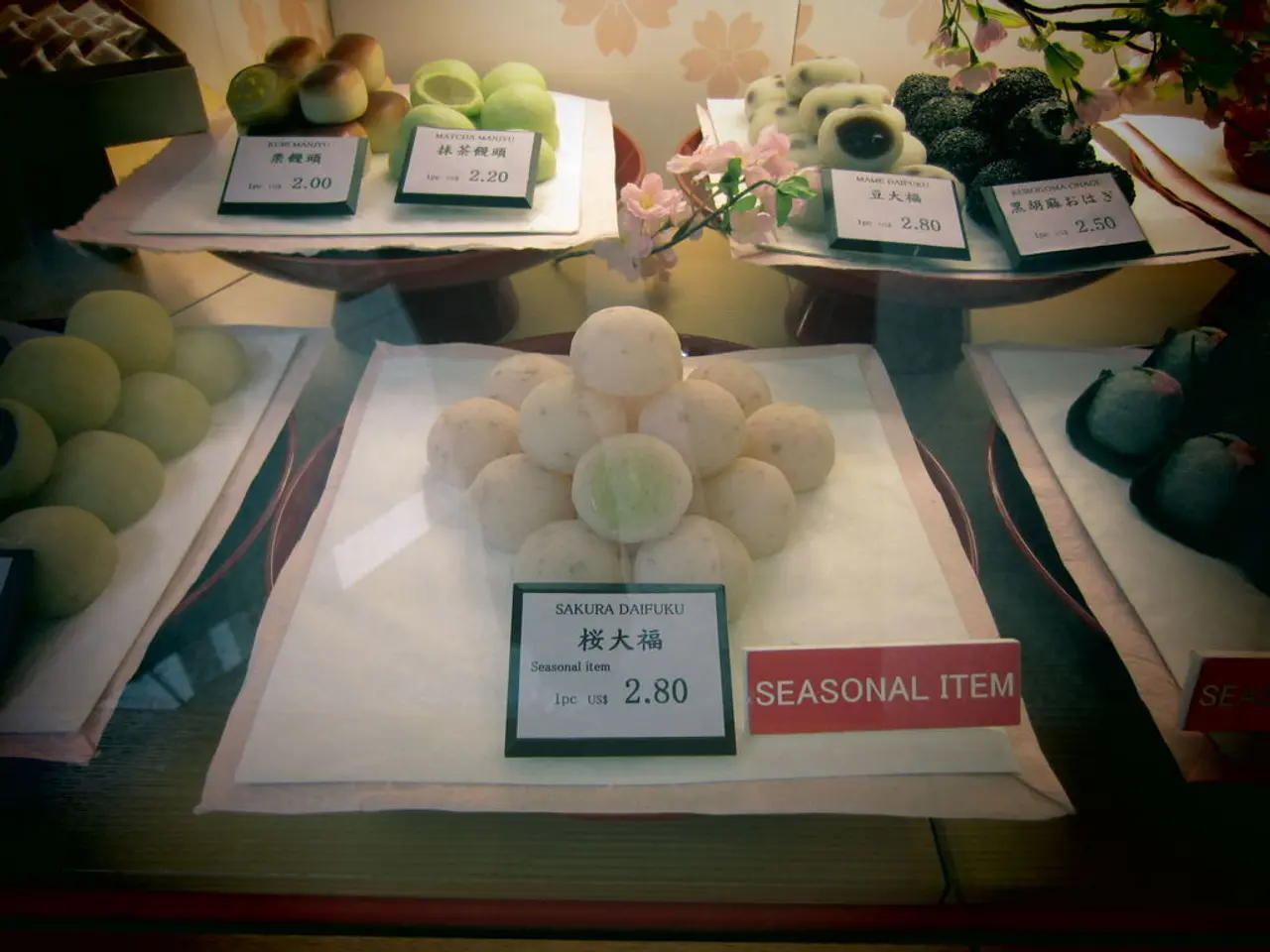Sustainable Apparel Industry Shifts Towards Eco-Friendly Material: Plant-Based Leather Takes Center Stage
Plant-Based Leather: A Sustainable and Eco-Friendly Revolution in the Fashion Industry
The fashion world is witnessing a significant shift towards sustainable and eco-friendly alternatives, with plant-based leather emerging as a promising solution. Brands like Stella McCartney, Gucci, and Adidas have already embraced this innovative material, recognising its potential to reduce environmental footprints.
Current innovations focus on materials derived from seaweed, mushrooms (mycelium), fungi, and agricultural by-products. These new leathers offer sustainable, cruelty-free, and environmentally regenerative alternatives to traditional animal leather.
One of the leading bio-based materials is seaweed leather. Rapidly growing without freshwater, fertilizers, or land, seaweed acts as a carbon sink, absorbing CO2 during growth. It is fully biodegradable and regenerative, making it a promising eco-friendly alternative, especially for luxury fashion brands aiming to reduce their environmental impact.
Mushroom mycelium leather, derived from the root structures of mushrooms, is another innovative material. Its durability, versatility, and ability to mimic traditional leather’s texture have made it a popular choice among fashion houses in collaboration with biotech startups. Mycelium leather appeals to eco-conscious consumers and is expanding applications beyond fashion to automotive and interiors.
Fungi-based textiles, such as Hydefy, are developed from fungi combined with agricultural waste like sugarcane residue through fermentation. These materials offer a high-performance, vegan, and customizable alternative to leather, appealing to designers and luxury brands.
Grain-based alternatives, like BioFuze, generate leather-like materials from grains and agricultural by-products, aligning with circular economy principles and reducing reliance on plastic-based vegan leathers. This innovation supports farmers economically and reduces environmental harm.
The benefits of using these biodegradable plant-based leathers are numerous. They offer environmental sustainability, renewability and regeneration, consumer appeal, versatility, and performance. With reduced carbon footprints, no animal cruelty involved, less water and chemical usage, biodegradability, and renewability, these materials are a step towards a more sustainable future.
Digital manufacturing methods, such as 3D printing, are being explored to produce leather-like textiles with minimal waste. However, producing biodegradable leather from plants requires new infrastructure and supply chains that are not yet as established as those for traditional or synthetic leather.
Sourcing biodegradable leather from plant-based suppliers has become more straightforward, with many specialized suppliers offering certified materials that meet international sustainability standards. When sourcing, it's crucial to verify the biodegradability, ethical sourcing, and life-cycle analysis of the material to ensure it aligns with sustainability goals.
Plant-based leather is increasingly cost-competitive as technology advances, making it a practical and ethical solution to the environmental concerns associated with traditional leather production. Today’s consumers, especially millennials and Gen Z, are actively seeking sustainable and ethical alternatives in their purchases. Fashion brands that embrace biodegradable leather and plant-based alternatives not only reduce their environmental impact but also strengthen their market position.
Small and medium-sized fashion businesses are also beginning to make the switch, fuelled by increasing accessibility and innovation. Biofabrication, involving growing leather-like materials in labs using genetically engineered yeasts and fungi, is emerging as a sustainable method with enormous potential.
In conclusion, plant-based biodegradable leathers are a significant and expanding solution to the fashion industry's challenges of sustainability, ethics, and performance. They surpass conventional plastic-based alternatives and animal leather in environmental and social terms, offering a promising future for a more sustainable fashion industry.
[1] [Source] [2] [Source] [3] [Source]
- As the fashion industry seeks to minimize its environmental impact, science and technology are playing vital roles in developing eco-friendly alternatives to traditional leather, such as those derived from seaweed, mushrooms, fungi, and agricultural by-products.
- A sustainable and business-friendly future for the fashion industry could be achievable through the financing of innovative plant-based leather research and development, which aligns with environmental-science principles and promotes the lifestyle choices of eco-conscious consumers.
- The growth of the plant-based leather market not only presents opportunities for finance investment but also contributes to the advancement of scientific research in areas like biofuel, agricultural by-product utilization, and environmentally conscious business practices.




